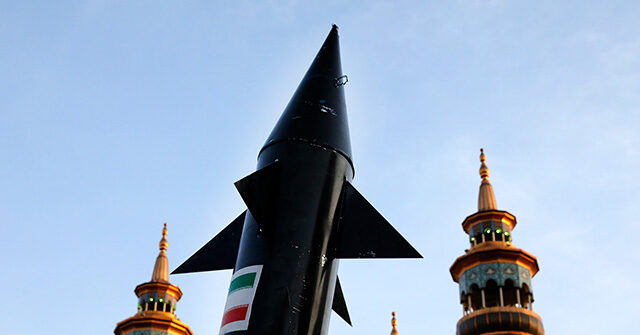On Wednesday, Iranian Defense Minister Aziz Nasirzadeh criticized the United States’ deployment of the Terminal High Altitude Area Defense (THAAD) missile defense system in Israel, dismissing it as “psychological warfare” that would not effectively improve Israel’s defense capabilities against potential Iranian missile attacks. His comments came in response to the Pentagon’s confirmation of the system’s arrival to strengthen Israel’s existing missile defense infrastructure. Nasirzadeh’s skepticism suggested that Iran views this deployment as a symbolic gesture rather than a substantial enhancement of its adversary’s defense mechanisms.
The Pentagon has taken steps to ensure Israel’s defense against Iranian ballistic missiles, with a U.S. military team dispatched to facilitate the THAAD system’s installation. However, specifics on the operational timeline for the system remain undisclosed by the Pentagon. The deployment has been framed by U.S. officials as a measure to reaffirm America’s commitment to Israel’s security and its broader aim of protecting U.S. citizens in the region from potential threats originating from Iran. Nasirzadeh countered the narrative, asserting that threats from Israel are not novel and that Iran remains resolute and prepared to respond decisively to any provocations.
Following Iranian missile strikes that targeted Israel in previous months, Iranian military figures and state media have overemphasized the impact of these attacks, claiming they inflicted damaging blows to Israel. In reality, a significant number of the missiles launched by Iran during those incidents were intercepted by Israel’s comprehensive missile defense system, which includes advanced technologies such as the Iron Dome, David’s Sling, and Arrow systems. Despite some limited success from the recent missile volley, defense analysts speculate that the likelihood of Israeli retaliation is heightened due to any resultant damages from the attacks.
Israeli Prime Minister Benjamin Netanyahu, aligning with the Biden administration’s interests, has reportedly decided against engaging in retaliatory strikes on sensitive Iranian sites, such as its oil fields or nuclear facilities. Instead, Netanyahu has suggested that Israel’s response will focus on Iranian military infrastructure, a shift that indicates a strategy aiming to prevent escalation into a broader conflict. The potential for such escalation is especially pertinent against the backdrop of upcoming U.S. elections, where actions leading to economic fallout could have political ramifications for the Democratic Party.
Israeli Defense Minister Yoav Gallant emphasized Israel’s plans for a calibrated response that would be “precise, painful, and surprising,” but also sophisticated enough to avoid sparking further conflicts, notably against the backdrop of strained relations with the U.S. Reports have suggested that Netanyahu’s careful approach to Iranian provocations is influenced by concerns over electoral repercussions in the United States, particularly regarding economic recovery and fluctuating oil prices. The juxtaposition of military strategies and political reasoning indicates that actions in the region are closely monitored for their possible domestic effects in the U.S.
Adding another layer of complexity, experts have highlighted that the THAAD deployment not only impacts regional stability but also poses logistical challenges for U.S. military resources. High demand for air defense capabilities, exacerbated by commitments in global conflicts such as the ongoing war in Ukraine, creates strains on U.S. military units tasked with managing these deployments. The strains on air defense resources, coupled with the geopolitical ramifications of missile defense installations, reveal the intricate balance of military readiness, international diplomacy, and domestic political considerations, underscoring the necessity for international actors to navigate these developments with caution.

